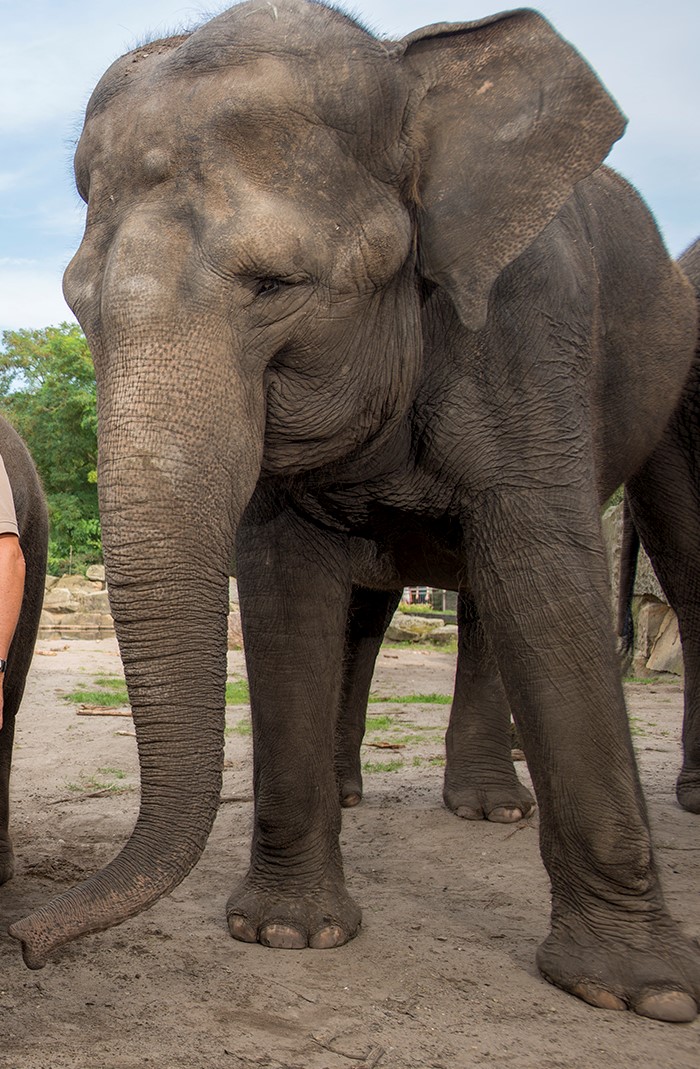Frosja (39) gently gropes for a crunchy apple with her long trunk, while Louise (46) tosses some dry sand across her back. The Tierpark’s two female elephants coped well on their journey to Augsburg and are now settling into their new home. In order to ease the transition, for the first few days the two Berliners will have the company of their longstanding keepers Mario Hammerschmidt and Ralf Seemann.
The relocating of Frosja and Louise is the first stage in an exciting new project at Tierpark Berlin: the construction of Europe’s most modern elephant habitat. In the future, African elephants will roam across a savannah-like landscape, while zebras, antelopes and giraffes gather around the nearby waterhole. At the centre of this African landscape will be the new Elephant House, with a modern design that will give its inhabitants 3,000 m² of space. Construction work is set to begin this year, but first the elephants at Tierpark Berlin must be successively moved to temporary new homes.
“Of course it’s hard to say goodbye, but we know that the old ladies are in good hands with our Augsburg colleagues,” says Zoo and Tierpark Director Dr Andreas Knieriem. “And the joy far outweighs any sadness, as in future we will be able to give these wonderful animals much more space, and our visitors a more authentic experience of the unique habitat of African elephants.”
In the wild, elephants live in family groups led by a matriarch. Individual animals form nuanced social bonds that we would call friendships. Habitats at modern zoos should allow elephants to preserve these kinds of social structures. At the same time, zoos hope to breed the endangered animals. The European Endangered Species Programme (EEP) for elephants oversees elephant populations in Europe and makes decisions on breeding strategies. Committees working within the EEPs – made up of experts from various zoos – work together to create favourable new herds, which often results in the rehoming of individual elephants. This complex process, which can take months, ensures that both African and Asian elephants are kept in a way that is right for their species and as close as possible to conditions in the wild.
At Augsburg Zoo, Frosja and Louise can enjoy a new elephant habitat where they will form a group with two elderly Augsburg females. “I hope they both enjoy their lovely new home,” says Tierpark elephant keeper Mario Hammerschmidt. “We will certainly continue to visit Frosja and Louise while they are here.”
The Tierpark’s remaining elephants will also leave this summer. These include a family group led by matriarch Kewa (37), and three more elephant cows: Lilak (48), Pori (39) and Kariba (14). Construction of the state-of-the-art elephant house is expected to take two years. In line with the principle of quality over quantity, the new building will only house African elephants –and will offer those elephants almost ten times the amount of space they had before.
![[Translate to English:] [Translate to English:]](/fileadmin/user_upload/Asiatischer_Elefant_Louise_Tierpark_Berlin.gif)
